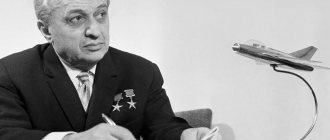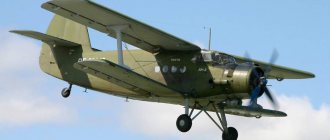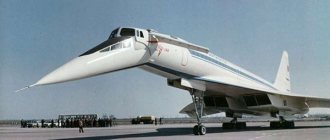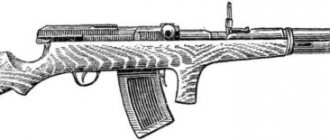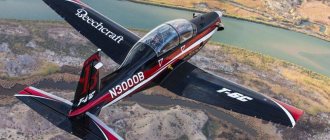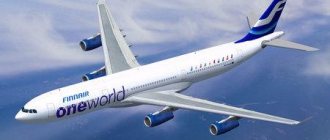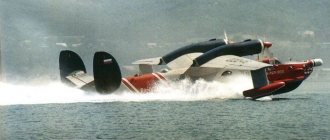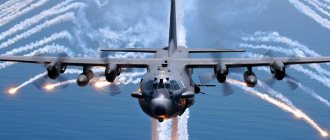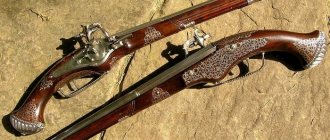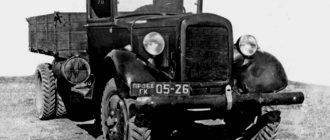Leonardo da Vinci thought about flying in the sky using a special device in the 16th century, but the first flight was officially registered at the beginning of the last century. There are still fierce debates about who we owe the opportunity for air travel, but the fact remains that the first flight was officially registered in 1903. The very first airplane in the world was invented by the Wright brothers.
The Wright brothers' first prototype aircraft
Aviation history
The first attempts to build an aircraft capable of lifting a person into the air began at the end of the 18th century. The history of the invention of the aircraft begins in England, when Sir George Cayley took this issue seriously and published several scientific works in which he outlined in detail the principle of construction and operation of the prototype of a modern aircraft.
The inventor began his work by observing birds. The scientist devoted a long time to measuring the flight speed of birds and their wingspan. These data subsequently became the basis of several publications that laid the foundation for the development of aviation.
Keighley's Flying Machine Sketches
In his first sketches, Keighley imagined the plane as a boat with a tail at one end and a pair of oars at the bow. The structure was supposed to be propelled by oars, which would transmit rotation to a cross-shaped shaft at the end of the vessel. Thus, Keighley unmistakably depicted the main elements of the aircraft. It was the work of this scientist that laid the foundation for the development of aviation and became the impetus for the development of the aircraft concept.
The pioneer of aviation in its modern sense was another English inventor, William Henson. It was he who received the order to develop a design for an aircraft in 1842.
Henson's "steam aircrew" design described all the basic elements of a propeller-driven aircraft. The inventor proposed using a propeller as a device for moving the entire structure. Many of the ideas proposed by Henson were subsequently developed and began to be used in early aircraft models.
Russian inventor N.A. Teleshov patented a project for the construction of an “aeronautics system.” The aircraft concept was also based on the steam engine and propeller. A few years later, the scientist improved his project and was one of the first to propose the idea of creating a jet aircraft.
A feature of Teleshov’s projects was the idea of transporting passengers in a closed fuselage.
At what altitude and at what speed did Concorde fly?
The ability to fly across the Atlantic in just three hours was achieved due to the fact that the aircraft accelerated to a speed of approximately 2,200 kilometers per hour. He did this at an altitude of 18,000 - 18,500 meters . Thanks to flights at such a high altitude, Concorde could afford not to wind through air corridors, wasting time, but to move along the shortest possible straight line.
During a long flight at high speed, the temperature of the nose of the aircraft could rise to 130 degrees Celsius, and at the tips of the wing it could reach 100 degrees.
Movement at such a high speed would not be possible if the traditional aerodynamic design was maintained. Since air resistance is proportional to the square of the speed, the structure must be much stronger. When the speed increases almost three times, the resistance increases by about nine times. Also, the aerodynamics should not be in the form of a drop so that the air flows around it, but in the form of a wedge in order to literally pierce the air without creating a high-pressure zone in front of the nose.
It is this shape of the glider that allows you to overcome the speed of sound.
The wings should also be more compact, since at this speed there is already enough lift. As a result, they were made in the shape of triangles, offset back. Speaking more from the technical side, this design of the aircraft is called “tailless” and it is made with a low-lying triangular wing of an ogive shape (intermediate between a cone and an ellipsoid). This made them more streamlined and more durable, but there was one serious disadvantage of this arrangement.
Without going into the intricacies of the Concorde's complex fuel system, we can only say that it consisted of 17 tanks with a total volume of 119,280 liters. When switching to supersonic, fuel moved between tanks through balancing chambers. Then the speed increased and the fuel moved again. After this, the plane gained maximum speed.
Who invented the airplane
Airplane TU 204: from history to modern times
Despite the fact that the development of the design of the aircraft was carried out by many scientists in the mid-19th century, the invention of the aircraft is attributed to the Wright brothers, whose airplane made a short flight in 1903.
Not everyone agrees that the Wright brothers were the first. Brazilian Alberto Santos-Dumont designed, built and personally tested the world's first prototype of an airship in 1901. It was then that it was proven that controlled flights were indeed possible.
According to another version, primacy in the invention of the first working aircraft should be assigned to the Russian inventor A.F. Mozhaisky, whose name will forever remain in the history of aviation. Thus, debates about who invented and who created the aircraft are still ongoing.
Interesting! Despite the fact that the invention of the airplane is officially awarded to the Wright brothers, all Brazilians are confident that the world's first airplane was invented by Santos Dumont. In Russia, it is believed that the first prototype of a modern aircraft was built by Mozhaisky.
Why does a supersonic plane have a nose down?
The design of the nose of passenger supersonic aircraft is not made this way for beauty. The nose down performs a very important function. Only thanks to him is it possible to land the plane.
Including due to the insufficient lifting force of the wing of such an aircraft at low speed, before landing it was necessary to raise the nose very high. In that case, the pilots simply could not visually control the approach to the runway. Landing blindly was also a bad idea and therefore we had to get out of the situation.
The landing approach should have been exactly like this.
During taxiing and takeoff, the nose cone dropped only five degrees. That was enough. During landing and approach, it deviated by 12.5 degrees. There was also additional glazing. It rose in the main flight configuration at Mach numbers greater than 0.8.
The hinged nose helped ensure that the nose cone did not block the pilots' view. In addition, it was possible to make them look at the strip through more vertically positioned glass. Because of this, there was less distortion and security became much higher.
As a result, the nose dropped when it was not needed. The aerodynamics of the aircraft in this version left much to be desired, but everything was corrected when the nose was raised. It gave the structure the desired shape and made the contours of the cabin more streamlined.
Interestingly, to ensure a safe landing at such a high angle of attack as Concorde, it was made higher (the height of the struts was 3.5 meters) and the service pattern at the airport had to be slightly changed. As a joke, the plane was even called a heron.
That's why they called him a heron.
Work of the Wright Brothers
First time at the airport: what to do step by step
The Wright brothers were not the first inventors of the airplane. Moreover, the first uncontrolled flight of a person also did not belong to them. However, the Wright brothers were able to prove the most important thing - that a person is able to control an aircraft.
It was Wilbur and Orville Wright who were the first to carry out controlled flight on an aircraft, thanks to which the idea of the possibility of carrying out passenger transportation by air was further developed.
The brothers came up with the idea of three-axis rotation of the aircraft, which was used to control their aircraft and maintain the balance of this bulky structure.
At a time when all scientists were puzzling over the possibility of installing more powerful engines to lift the aircraft into the air, the brothers focused on the issues of the ability to control the aircraft. The result was a series of wind tunnel experiments that served as the basis for the development of airplane wings and propellers.
The first powered glider built by the brothers was called Flyer 1. It was made of spruce, as this material is lightweight and reliable. The device was driven by a gasoline engine.
Interesting! The engine for the Flyer 1 was made by mechanic Charlie Taylor; a design feature was its low weight. To do this, the mechanic used duralumin, also called duralumin.
Wright brothers plane
The first successful flight was made on December 17, 1903. The plane rose several meters and flew about 40 meters in 12 seconds. Then there were repeated tests, as a result of which the flight duration and altitude increased.
Miracle Dove of Archyta
Since time immemorial, man has sought to see the earth from where birds looked at it. He began to fly, or rather try to take off, imitating them. To do this you need wings, and wings must have feathers. This is what the ancient dreamer thought as he followed the flock of birds with his gaze.
A mythical ancient master named Daedalus made his wings from feathers glued with wax. He made the same ones for his son Icarus, and he soared into the sky so high that he carelessly approached the luminary, and the heat of the sun melted the wax on his wings. In the human mind, flight began to inevitably be associated with falling.
Carried away by the flight, Icarus flew too close to the Sun. The wax that bound the feathers of his wings melted. Having fallen from a great height, the son of Daedalus died in the depths of the waves. The Fall of Icarus. P. P. Rubens. 1636
In the V-IV centuries BC. e. In the Italian city of Taranto there lived a man named Archytas . He was skilled in the sciences and arts, wrote works on mechanics, arithmetic, astronomy and music, and was friends with Plato himself. Seven times he was elected strategist, that is, city mayor and military leader.
Once, while watching a bird in the sky, a scientist decided to make exactly the same one out of wood and make it fly in order to unravel the secret of the mechanism placed in the bird’s chest that controls flight. It is difficult to say how successful Archytas was. According to eyewitnesses, his creation managed to flap its wings, take off and fly through the air in front of the amazed crowd for about 200 m.
Apart from the colorful detail of flapping wings, Archytas's invention can be called the world's first successful model of a glider (non-motorized heavier-than-air aircraft).
Archit. The bust was found during excavations at Herculaneum. Today located in the National Archaeological Museum of Naples
Today, this event is recalled by a laconic inscription left by the ancient Roman writer Aulus Gellius: “Archytas of Tarentum, skilled, among other things, in mechanics, made a flying wooden dove.”
Santos Dumont and 14 bis
The jet plane is the most powerful aircraft of modern aviation
Alberto Santos-Dumont is known as the inventor of hot air balloons and is also sometimes cited as the creator of the world's first controllable airplane. He also invented airships that were controlled by an engine.
In 1906, his plane called “14 bis” took off and flew more than 60 meters. The height to which the inventor raised his aircraft was about 2.5 meters. A month later, Alberto Santos-Dumont made a 220-meter flight on the same plane, setting the first record for flight distance.
Airplane "14 bis"
A special feature of “14 bis” was that the structure was able to take off on its own. The Wright brothers failed to achieve this, and their plane took off with outside help. It was this nuance that became fundamental in the debate about who should be considered the inventor of the first aircraft.
After 14 bis, the inventor seriously began developing a monoplane, and as a result, the world saw the Demoiselle.
Alberto Santos-Dumont never rested on his laurels and did not keep his inventions secret. The inventor willingly shared the designs of his aircraft with thematic publications.
Winged madmen of the Middle Ages
The first hang glider, a heavier-than-air aircraft capable of moving in the direction of the wind, was designed by the Arab inventor Abbas ibn Firnas . It was an artificial wing made of fabric stretched over wooden struts. In 852, Ibn Firnas lifted his creation to the minaret of the Great Mosque in Cordoba and threw himself down with it.
The flight looked more like a fall, but the daredevil remained alive, escaping with only a bruise. In 1003, Ibn Firnas’ attempt was repeated by Al-Abbas ibn Said al-Jauhari , and again the landing “rewarded” the tester with bruises. These daring experiments inspired the monk Aylmer from the British city of Malmesbury to “take a risky and extremely courageous act.”
Aylmer of Malmesbury with his invention on one of the stained glass windows of Malmesbury Abbey
As the chronicler William of Malmesbury describes, Aylmer climbed onto the roof of a high tower, tied artificial wings to his arms and legs and, oriented in the direction of the sea breeze, rushed down. The wind carried him over the ground for a distance of "more than a furlong" (approximately 201 m). The monk was in the air for about 15 seconds, but after landing the poor man could not get up: both legs were broken. Aylmer forever remained lame, but earned the nickname “Flying Friar.”
There were also people in Rus' who liked to fight gravity. The manuscript of St. Daniel the Imprisoner, who lived in the 13th century, speaks of people who “fly from a church or from a high house on silken wings.”
The first officially confirmed attempt to fly dates back to 1695. A certain person turned to Tsar Peter I with a request to give money to make wings on which one could “fly like a crane.” Having received 18 rubles from the treasury, the inventor made wings first from mica and then from leather, however, no matter how hard he tried, no matter how much he waved them, he could not get off the ground.
Minaret of the Great Mosque in Cordoba. It was from there that Abbas ibn Firnas jumped off to test his invention.
Mozhaisky's aircraft
The scientist presented his aircraft project for consideration back in 1876. Mozhaisky encountered a lack of understanding from the officials of the War Ministry; as a result, he was not allocated funds to continue his research.
Despite this, the scientist continued his development, investing his own funds, which is why the construction of the prototype of Mozhaisky’s aircraft was delayed for many years.
Mozhaisky's plane was built in 1882. The first tests of the aircraft ended in disaster, but witnesses claim that the aircraft did rise some distance from the ground before crashing.
Since there is no documentary evidence of the flight, Mozhaisky cannot be considered the first person to fly on an airplane. However, the scientist’s developments served as the basis for the development of aviation.
How much did it cost to fly on Concorde?
Despite the initial success of the model and its revolutionary nature, it soon became clear that from an economic point of view it was completely unprofitable. The plane flew mainly on the route from Paris to New York and back. The travel time took only three hours , but during this time the plane burned up to 8 tons of fuel per ton of payload. Roughly speaking, to deliver 10 people with one suitcase each to their destination, 8 tons of fuel were required.
8 tons of fuel to deliver one ton of payload is how economical it is.
At the same time, the aircraft required more expensive and lengthy maintenance. Concorde operated in more difficult conditions than conventional airliners, and in addition to routine maintenance, it was also necessary to check the strength of the structure, sometimes even using X-ray equipment. All this led to long periods of downtime, and even on the ground the plane required a lot of money for its maintenance. Not to mention the purchase price of the board itself, which was also much higher than that of a conventional jet aircraft.
The cost was high only at the beginning, when it turned out that the planes were very difficult to make a profit from, they were sold for a symbolic price. French airlines bought them for one franc, English ones for 1 pound. But they took upon themselves the obligation to operate the aircraft and sell them only at the same symbolic price
At different times, a flight on Concorde cost different things, but on average we can talk about the price of 10-11 thousand dollars. This is how much a ticket from Paris to New York and back cost. Even now the amount seems very large. Back then it was a fortune and not everyone could afford to regularly fly on business on such a plane. Many passengers took a ticket for it simply as an attraction.
Would you fly on this beauty for 10+ thousand dollars?
When Concorde made its last voyage, prices for it at auctions rose to 60 thousand dollars .
So who was first?
Despite numerous disputes about the year in which the aircraft was invented, the first officially registered flight belongs to the Wright brothers, so it is the Americans who are considered the “fathers” of the first aircraft.
It is inappropriate to compare the contributions to the development of aviation by the Wright brothers, Santos-Dumont and Mozhaisky. Despite the fact that Mozhaisky's first aircraft was built 20 years before the first controlled flight, the inventor used a different construction principle, so it is impossible to compare his aircraft with the Wright brothers' Flyer.
Santos-Dumont was not the first to fly, but the inventor used a fundamentally new approach to the construction of an aircraft, thanks to which his device took off independently.
In addition to the first controlled flight, the Wright brothers made a significant contribution to the development of aviation, being the first to propose a fundamentally new approach to the construction of an aircraft propeller and wings.
There is no point in arguing which of these scientists was the first, because they all made a huge contribution to the development of aviation. It was their work and research that became the basis for the invention of the prototype of a modern airliner.
Early twentieth century
In the early 1900s, biplanes were, as they say, “in use” in aviation. There were several varieties of them. However, there were two main aerodynamic options for iron birds: with a pushing propeller and a so-called box-shaped wing (this is a biplane wing when the shape of the box when viewed from the front is rectangular) - one, and with the tail located at the rear and a pulling propeller - two. In those years, in general, they built mainly either two-seat biplanes or single-seat monoplanes, since these two types of aircraft showed the best results based on the results of various tests. We will talk about the advantages of biplanes, as well as their disadvantages, in more detail below.
The first military aircraft
Prototypes of the Wright brothers' Flyer and the Santos-Dumont aircraft were used for military purposes.
If the brothers initially pursued the goal of inventing technology that would give an advantage to the American army, then the Brazilian Santos-Dumont was against the use of aviation for military purposes. Despite this, his work served as a starting point for the creation of a number of aircraft that were later used during the war. Interestingly, Mozhaisky also initially pursued the construction of an aircraft that would be used for military purposes.
The first jet aircraft appeared at the height of World War II.
How to fly in Ancient China
If in Europe flight was associated with wings and feathers, then for the dreamy Chinese the dragon served as a model. China is the birthplace of the kite - an aircraft made of thin fabric or paper stretched over a rigid wooden frame. The structure is held in the air due to wind pressure on its surface.
The kite is an invention of the ancient Chinese
Another invention that served as the prototype of the balloon comes from China. The Chinese commander and statesman Zhuge Liang, after unsuccessful attempts to capture an enemy city, decided to implement an unusual idea.
The commander ordered a large number of thick paper bags to be made and a burning oil lamp placed inside each one. The air in the bags began to heat up, and soon they soared above the city. The besieged, seeing a cloud of flickering lights flying towards them, immediately opened the gates for the general, deciding that some divine force was helping him. This happened at the beginning of the 3rd century.
Sculpture of Zhuge Liang at the Wu Hou Temple in Chengdu (Sichuan Province, China)
For his cunning and resourcefulness, his contemporaries nicknamed Zhuge Liang the “Invisible Dragon.” His invention went down in history as the Chinese lantern.
In subsequent designs, instead of a bag, a light wooden frame covered with a rice paper dome was used. The oil lamp was replaced by a burner made of cloth impregnated with wax. To avoid ignition, the paper was treated with a special non-flammable compound. Such lanterns were widely used in the Chinese army as signal lights.
Chinese lanterns in the night sky - the illumination that frightened the enemies of General Zhuge Liang
The first passenger planes
The first passenger aircraft appeared thanks to I.I. Sikorsky. The prototype of the modern airliner took off in 1914 with 12 passengers on board. In the same year, the Ilya Muromets airliner set a world record by making its first long-distance flight. It flew the distance from St. Petersburg to Kyiv, making one landing to refuel.
The first passenger airliner "Ilya Muromets"
The airliner was also used to transport bombs during the First World War. The war forced Russian aviation to freeze in development for some time.
In 1925, the first K-1 aircraft appeared, then the world saw Tupolev passenger airliners and aircraft developed by KhAI. Since that time, passenger aircraft have received more and more attention; they have acquired greater passenger capacity and the ability to fly long distances.
Airplanes of the First World War
The First World War stimulated the development of aircraft manufacturing. Aviation in 1914–1918 was used for three purposes: reconnaissance, bombing and destruction of enemy aircraft. At first, airships were used, which were replaced by bombers and fighters.
Entente aviation
Russia
At the beginning of the First World War, the Imperial Air Force was considered the smallest in the world - 36 aircraft. The Russian army had 3 Ilya Muromets heavy bombers at its disposal. The transport model was equipped with two machine guns and loaded with 350 kg of bombs. During the war, Sikorsky's plane was modified and 85 copies were assembled: the number of firearms was increased to 5–8 units, and the stock of bombs was increased to 1.5 tons.
Great Britain
The British prepared for war in advance, so by the beginning of the conflict there were 60 units of combat air equipment in the service of the state. During the war years, the number of Aeroflot increased to 3.3 thousand aircraft. The British began developing a prototype fighter in the 1910s. The engineers' achievements formed the basis for the creation of the Vickers FB 5 Gunbus model, which took to the skies in 1915.
View this post on Instagram
A post shared by Victor Ray (@v1cr4v)
Vickers FB 5 Gunbus - the first
Gunbus fighter in the world:
- wingspan: 11.13 m;
- speed: 113 km/h;
- flight range: 380 km.
France
The French concentrated on fighting the German Air Force and did not bomb the enemy rear. The pilots honed their tactical actions in the sky. At the beginning of the war, France did not have competitive heavy bombers. The first models were developed in 1917–1918. The Farman F.60 Goliath was tested in January 1919.
View this post on Instagram
A post shared by Air Crash Daily (@aircrashdaily)
Farman F.60 Goliath
"Farman-Goliath":
- crew: 4 people;
- length: 14.77 m;
- wingspan: 26.5 m;
- height: 4.9 m;
- weight: 2.9 t;
- weight with loading: 5.4 t;
- speed: 170 km/h;
- engine: 900 l. With.;
- weapons: 2 Lewis machine guns, 1 ton of bombs.
History of jet aircraft development
The Russian inventor Teleshov was the first to propose the idea of a jet aircraft. An attempt to replace the propeller with a piston engine was made in 1910 by Romanian designer A. Coanda.
These attempts were unsuccessful, and the first successful test of a jet aircraft took place in 1939. The tests were carried out by the German company Heinkel, but several mistakes were made during the design of the model:
- incorrect choice of engine design;
- high fuel consumption;
- frequent need for refueling.
However, the first prototype of the jet was able to achieve a high rate of climb - more than 60 meters per second of flight.
Due to design errors, the jet aircraft could not travel more than 50 kilometers from the airfield due to the need for frequent refueling. Due to a number of shortcomings, the first successful model never entered mass production.
The first production aircraft was the Me-262 in 1944. This model was an improved version of the previous Heinkel model.
First jet aircraft
Then the development of jet aircraft was picked up by Japan and Great Britain.
How does Concorde differ from the supersonic TU-144?
If we talk about Concorde and TU-144 from a comparison point of view, then there is more in common between them than there is difference. First of all, both aircraft can fly at supersonic speed, and the “maximum speed” differs by literally a couple of hundred kilometers per hour (TU-144 is a little faster). Also, both planes are made according to the same aerodynamic design and an ordinary person will not even distinguish one plane from the other unless British Airways, Air France or Aeroflot is written on board. The first two names will be applied to Concordes, and the last one to TU-144.
The biggest differences are only in the design of the front end. Both aircraft have a folding nose, but the TU-144 has more developed aerodynamics in terms of moving elements. To make it easier for him to maintain balance when landing, he had small wings just behind the cabin. They folded back during landing and not only generated additional lift, but also directed air under the wing.
This photo clearly shows the wings that open on the TU-144 when landing.
These are all technical differences, but there was one more major difference. The fate of Concorde was much more successful. First of all, due to the fact that he flew in capitalist countries, where the market economy decided who was willing to pay a lot of money for a ticket. In the USSR, flights over long distances were important, but each ticket was subsidized by the state and it was expensive.
In addition, Concorde flew over the ocean and there the noise level during the transition to supersonic did not pose any pressing issues. It was much more difficult when the TU-144 “rumbled” over large cities.
3700 kilometers per hour. Virgin Galactic showed the concept of a supersonic passenger plane
And the TU-144 also had a disaster at the very beginning of its journey, when it crashed during a demonstration flight. The first Concorde disaster took place only in 2000 and this led to its fate ending just three years later, although the disaster was not even related to technical problems or shortcomings.
Disadvantages of biplanes
Unlike monoplanes, which were more suitable for sports flights, biplanes were not used as often by athletes (although special sports biplanes also existed, we will talk about this later). However, this cannot be called a significant drawback, but serious fuel consumption due to the mutual influence of two pairs of wings on each other is undoubtedly a disadvantage of this design. The wings, by the way, are capable of somewhat limiting the pilot’s visibility; however, the position of the pilot in the cockpit varies - he can also be in front of the wings, then this drawback also becomes insignificant. The main disadvantage of biplane aircraft is considered to be increased profile drag (this is the difference between the aerodynamic drag of the wing and its induced drag).
Be that as it may, the shortcomings that biplanes had did not at all prevent them, we repeat again, from being the most used aircraft during the First World War. We'll talk about this further.
Advantages
Biplane aircraft had many advantages - otherwise they would not have gained so much popularity. Perhaps their main advantage was the already mentioned large wing area with a relatively small wing span and the need for only a minimum runway. However, in addition to this, biplanes had enough advantages: greater carrying capacity, better visibility for both the pilot and the passenger, the ability to use this machine as a training machine, better maneuverability due to two planes of the wings, reduction in total weight and moments of inertia, greater reliability - for the same reason, greater stability and much less frequent spins. As you can see, there are more than enough advantages, but one cannot assume that biplane aircraft did not have any disadvantages. They did, and we’ll talk about them later.
